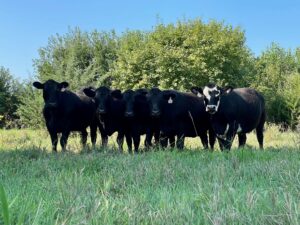How does the nutritional value of food today compare to the past? It’s pretty similar, actually. Do we really need to consume more foods than previous generations did to obtain adequate nutrients? No, but there’s a persistent myth in circulation that there’s a difference in nutritional value when comparing today’s food to food grown in the past. It might be an interesting story or an effective sales pitch, but it’s just not true.

It’s a myth that our food is less nutritious today due to agricultural practices depleting soil nutrients. As a farmer, I always thought this story of soil depletion was a questionable claim because we have to be very intentional about caring for the soil or it won’t be productive. On our farms, I’d say our soils are more productive than ever because of our attention to soil nutrient levels through practices like precision agriculture, no-till farming, the use of cover crops, grazing livestock, and incorporating the best methods available. Many of our fields have been farmed for decades, even beyond a century, and keeping this soil viable into the future is a necessity. Especially after the disaster of the Dust Bowl that our grandparents and great-grandparents endured almost a century ago, it’s been instilled in us that nurturing the soil is an absolute priority.

What about growing your own? By all means, having a backyard garden is gratifying work, whether it’s admiring a well-tended plot, enjoying a meal of just-picked, homegrown veggies on the side, or canning and freezing the abundance to enjoy outside of the growing season. On the farm where I grew up, my mom always grew an impressive garden and kept a well-stocked cellar. She’d rotate the location of garden plants and fertilize with manure from the chicken house or the cow lot. That concept is really the simplified version of nutrient application in modern farming. We grid sample our soils to determine exactly which nutrients are needed and apply them precisely by prescription. When available, we still fertilize with natural sources like manure from cattle, but one way or another, whether it’s naturally sourced or synthetically based, we’re still enriching the soil with nutrients only where needed. Our no-till and cover crop practices also improve soil structure, improve organic matter, and promote earthworm activity besides providing nutritional benefits to the soil. In fact, modern conventional agriculture also has the best tools available to protect this precious topsoil from wind and water erosion. Not only do we keep building productive soils, we grow high-quality food and fiber for the benefit of society.
So, how does today’s food really compare? The truth according to Journal of Food Composition and Analysis,Volume 56, March 2017, Pages 93-103:
- Mineral nutrient composition of vegetables, fruits and grains is not declining.
- Allegations of decline due to agricultural soil mineral depletion are unfounded.
- Some high-yield varieties show a dilution effect of lower mineral concentrations.
- Changes are within natural variation ranges and are not nutritionally significant.
- Eating the recommended daily servings provides adequate nutrition.
If you’d like to see the scientific research that backs up these facts, check out this link. https://www.sciencedirect.com/science/article/pii/S0889157516302113?fbclid=IwAR2o1Ysk5fXe45hcJ1znA6Htvz4F9pZcERNcS8_GbvEjMrkHX0DiEtOoCUM
It might be boring to say so, but the same advice keeps ringing true: eat a variety of foods in moderation, enjoy regular exercise, and ignore sensational food information. If we really want to revisit food from great-grandma’s day, we can pick a recipe from a vintage cookbook with confidence that it’s going to be just as yummy and nutritious as it was years ago. And she’d probably be quick to say that a pile of chicken manure is a lot more useful than information about food that just isn’t true.



